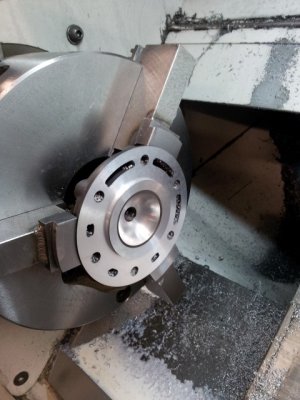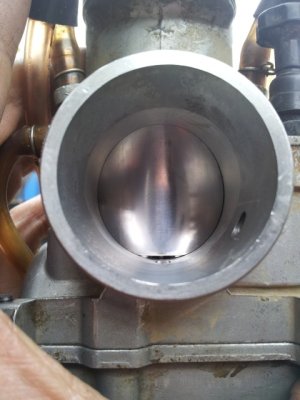Measured my chamber volume today and got the following results: Bike is an EC250 2005
Trapped volume 17.8ml (1st try) and 18ml (2nd try). Using a proper graduated calibrated glass burrette. Measured with piston at TDC using a little grease to seal rings. Hoisted front of bike up to get it level and filled plug hole to a level to meet the plug face.
On a 250 i make this a comp ratio of just below 15:1 - this sounds high to me??
Squish measures at 2.00mm so that needs skimming for sure.
Does this volume sound about right??
I have no pinging issues on pump fuel (98ron here in UK)
Cheers Andy
Trapped volume 17.8ml (1st try) and 18ml (2nd try). Using a proper graduated calibrated glass burrette. Measured with piston at TDC using a little grease to seal rings. Hoisted front of bike up to get it level and filled plug hole to a level to meet the plug face.
On a 250 i make this a comp ratio of just below 15:1 - this sounds high to me??
Squish measures at 2.00mm so that needs skimming for sure.
Does this volume sound about right??
I have no pinging issues on pump fuel (98ron here in UK)
Cheers Andy


